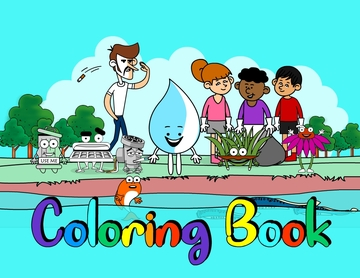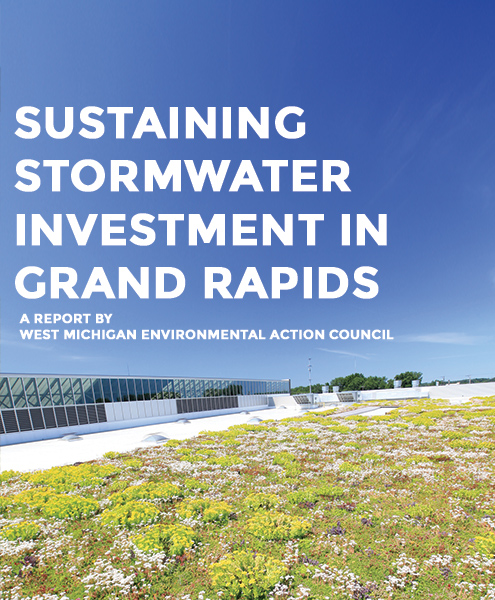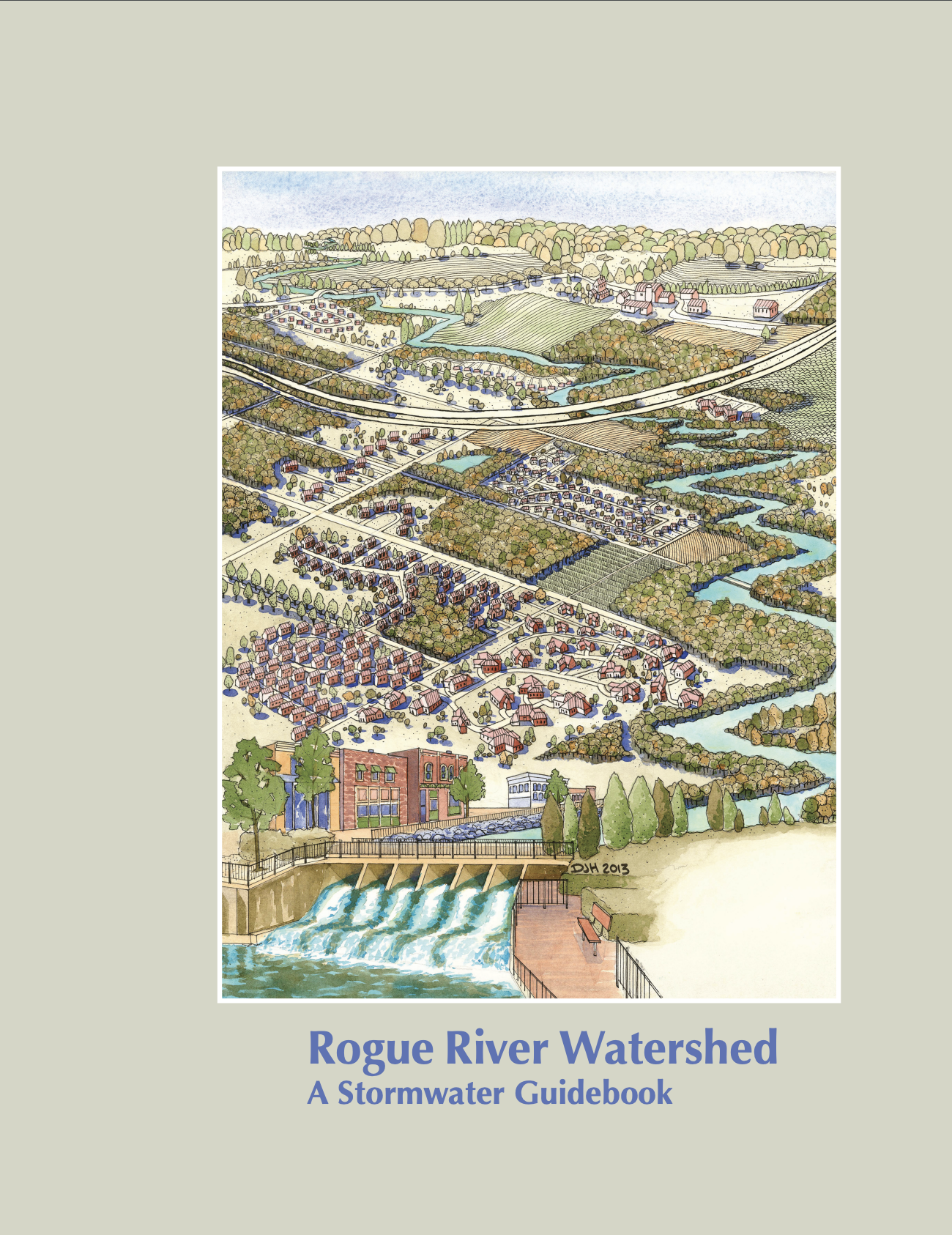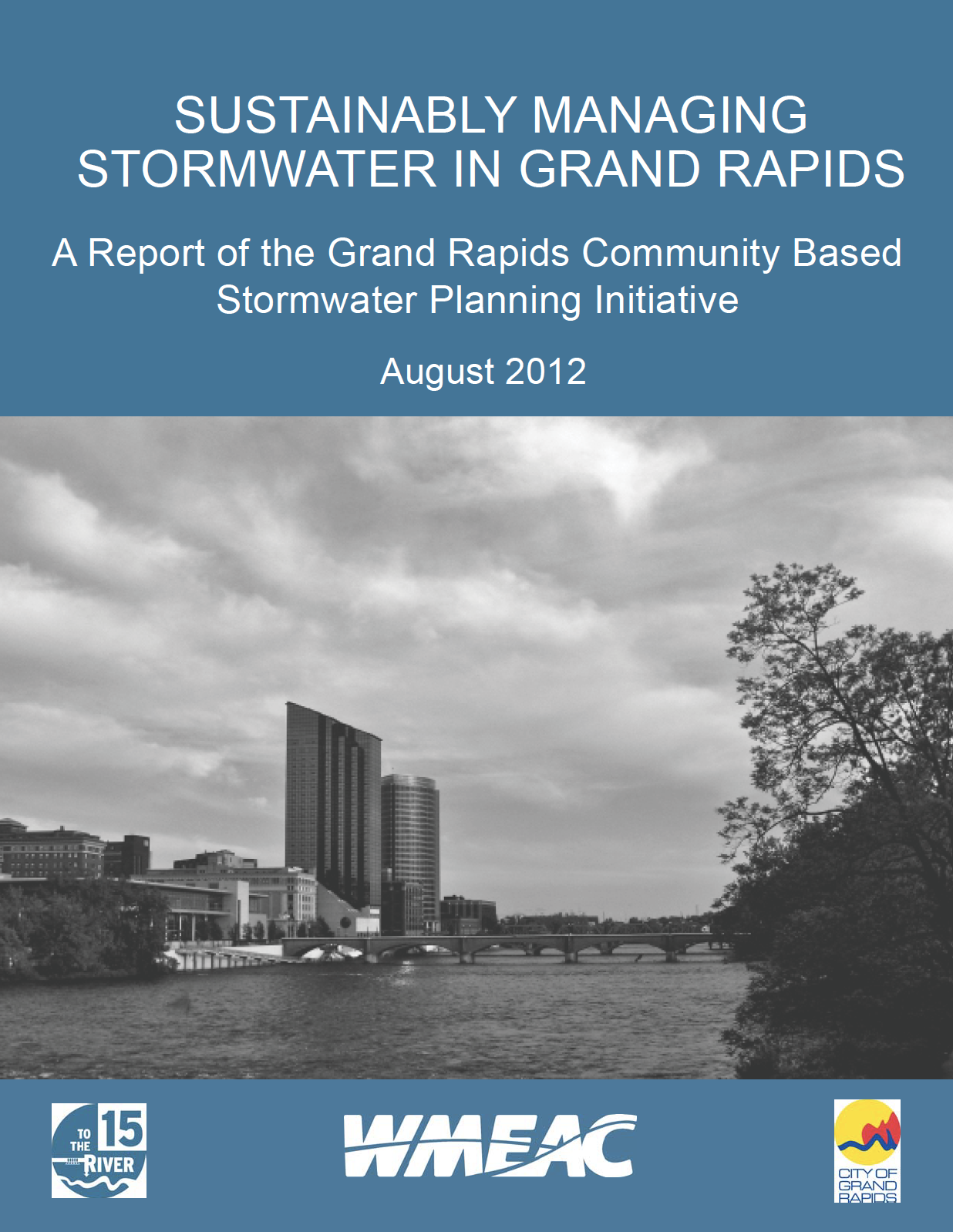Stormwater
When rainwater can't soak into the ground, it runs off of roads, roofs, and parking lots into our storm drains and waterways. This stormwater picks up pollutants like grease, oil, fertilizer, and trash, which pollute our rivers and and streams.
WMEAC has a number of programs and projects, focused on stormwater education, managment, and policy. We work with community leaders, regional partners, and community groups on best practices for protecting our water.
STORMWATER VIDEOS
Stormwater Rock: Watersheds
WMEAC partnered with the City of Grand Rapids, with funding from the Michigan Department of Environment, Great Lakes and Energy and the Wege Foundation, to develop an original song, video, and accompanying coloring book to help educate young people about the impacts of stormwater on their rivers. The song was written and performed by Brian Vander Ark, and the video and coloring book was created by Michael Lynn Animation Studios.
What is 15 TO THE RIVER?
The largest source of water pollution today is contaminated rain and stormwater. The stormwater falls onto our rooftops, lawns, and pavement. As it does so, it collects pollutants such as, pesticides, animal waste, litter, etc. Those contaminants then flow into storm drains and underground pipes.
In Grand Rapids, it takes just 15-30 minutes for polluted stormwater to move from your driveway into the Grand River. From there, it flows into Lake Michigan, carrying all the pollutants with it.
If stormwater is able to drain into the ground, the earth naturally filters out most of the pollutants. As a result, stormwater is not only cleaner, but also cooler and there is less of it. This is better for fish, invertebrates that fish eat, and plants in and around our bodies of water. It is also better for humans and property because there is less chance of flooding and related damages. Finally, natural stormwater filtering cuts down on the high costs of creating and maintaining the stormwater infrastructure saving the city money.
The key is to capture rain where it falls so it is able to drain into the ground. There are multiple ways we can help this process such as, implementing rain barrels, rain gardens, and porous pavement, as well as limiting impenetrable surfaces like parking lots.

STORMWATER WORKSHOPS
WMEAC hosts a number of different workshops on the impacts of stormwater runoff and what you can do to minimize pollution to our local rivers, lakes, and streams.
Rain Barrel Workshops:
Build your own rain barrel, and learn how you can limit stormwater runoff from your roof.
Stormwater Solutions Workshops:
Rotate through stormwater education stations including a floodplain model demonstration, a soil and inflitration station, and a rain barrel and green infrastructure station.
Rainwater Rewards Workshops:
Learn more about the costs and benefits of implementing different green infrastructure practices. Workshops can be tailored for community education or professional development.
SUSTAINING STORMWATER
INVESTMENT IN GRAND RAPIDS
A Report by West Michigan Environmental Action Council
WMEAC, with funding through the Dyer Ives Foundation, looked across the nation for best practices in ways to both sustain stormwater investment, and to get the most from the investments Grand Rapids has already made.


Rogue River Watershed: A Stormwater Guidebook
A report by Trout Unlimited Rogue River Home Rivers Initiative WMEAC was a contributing author and project partner on this Trout Unlimited project.
Sustainably Managing Stormwater in Grand Rapids
A Report of the Grand Rapids Community Based Stormwater Planning Initiative
WMEAC partnered with the City of Grand Rapids to review the City’s stormwater funding needs, best practices, and opportunities for changes in policy and practice.
Add link for attached report.


